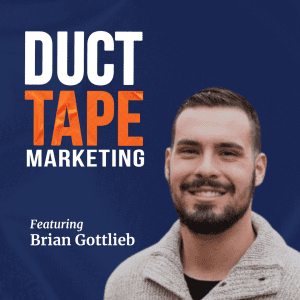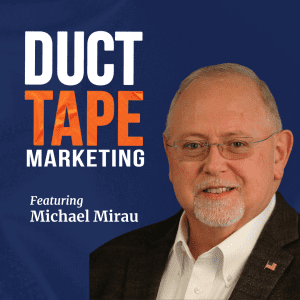Gain Client’s Trust by ensuring Cybersecurity written by John Jantsch read more at Duct Tape Marketing
 In this episode of the Duct Tape Marketing Podcast, I interviewed Zach Kromkowski, co-founder of Sention, about the importance of cybersecurity for small businesses and marketing firms.
In this episode of the Duct Tape Marketing Podcast, I interviewed Zach Kromkowski, co-founder of Sention, about the importance of cybersecurity for small businesses and marketing firms.
Zach’s cybersecurity journey began with a passion for problem-solving and a talent for turning ideas into reality. Blending intelligence, tenacity, and a love for community education, he simplifies cybersecurity through webinars, workshops, and consultations, helping MSPs and enterprises easily enhance their security.
We discuss best practices for system hardening, managing security in a distributed workforce, and the significance of password management and compliance standards. The conversation also touches on the risks AI poses in cybersecurity and the necessity of implementing two-factor authentication and VPNs. Zach emphasizes that adequate security doesn’t require a large budget and offers practical steps businesses can take to enhance their security posture.
Key Takeaways
- Cybersecurity is crucial for marketing firms and small businesses.
- System hardening can be done without a large budget.
- Managing security in a distributed workforce requires clear policies.
- Google Workspace users should regularly review linked accounts.
- Password managers are essential for secure password storage.
- Two-factor authentication (2FA) is a must for all software.
- SOC 2 compliance is a common standard for businesses.
- AI poses unique risks in cybersecurity that need to be addressed.
- Adding layers of security can deter potential attacks.
- Educating employees about security risks builds trust.
Chapters
[00:00] Introduction to Cybersecurity and Marketing
[02:00] Best Practices for Small Businesses
[04:59] Managing Security in a Distributed Workforce
[07:59] Enhancing Security with Google Workspace
[10:58] Password Management Best Practices
[13:58] The Role of VPNs in Security
[16:59] Understanding Compliance Standards
[18:10] AI Risks in Cybersecurity
[21:52] Conclusion and Resources
More About Zach Kromkowski:
Like this show? Click on over and give us a review on iTunes, please!
This episode of The Duct Tape Marketing Podcast is brought to you by:
 Try ActiveCampaign free for 14 days with our special offer. Exclusive to new customers—upgrade and grow your business with ActiveCampaign today!
Try ActiveCampaign free for 14 days with our special offer. Exclusive to new customers—upgrade and grow your business with ActiveCampaign today!
from Duct Tape Marketing https://ift.tt/p9JcKTI
via
IFTTT

 In this episode of the
In this episode of the 
